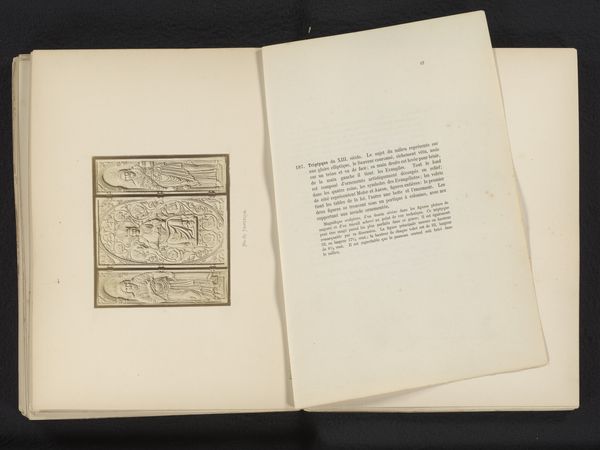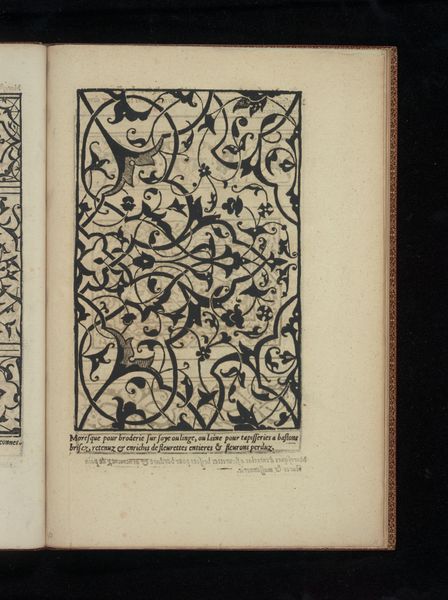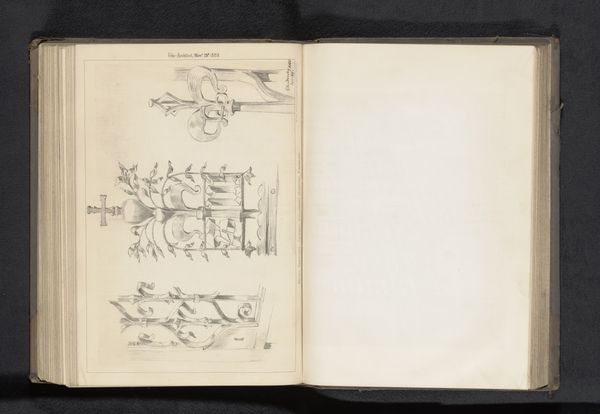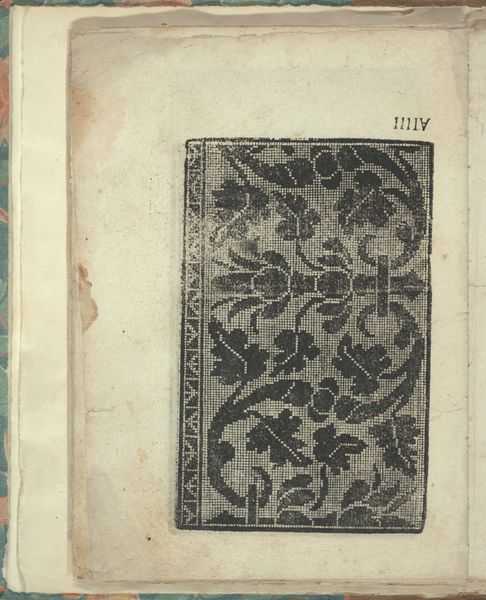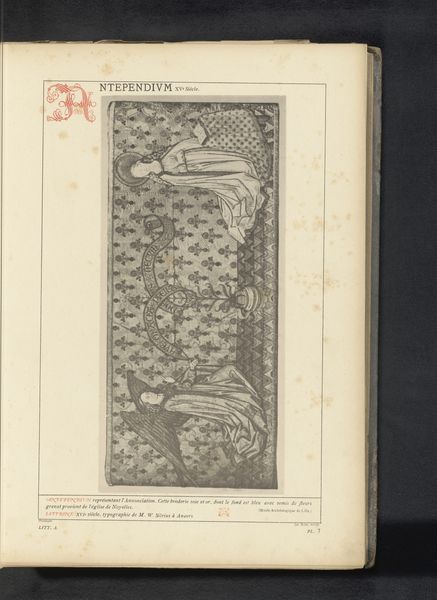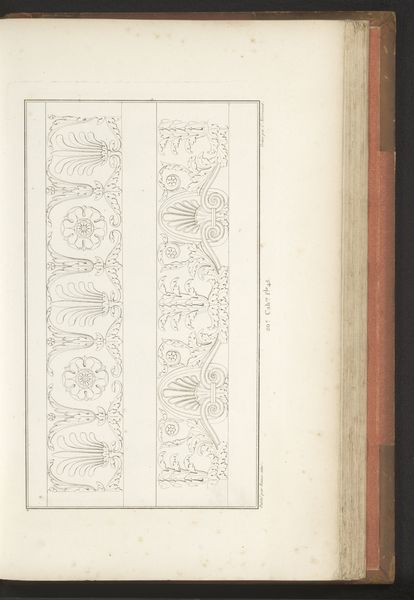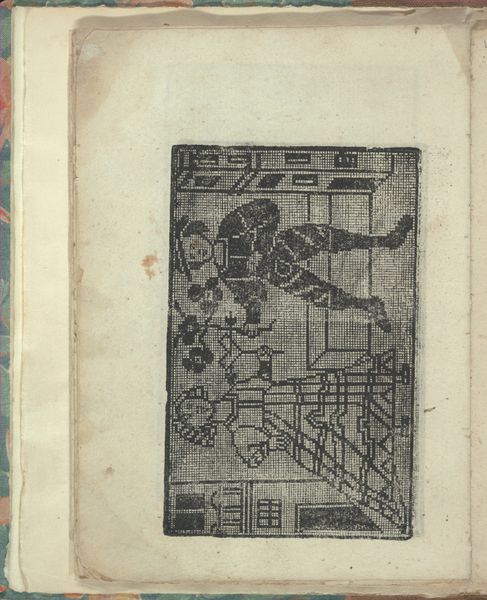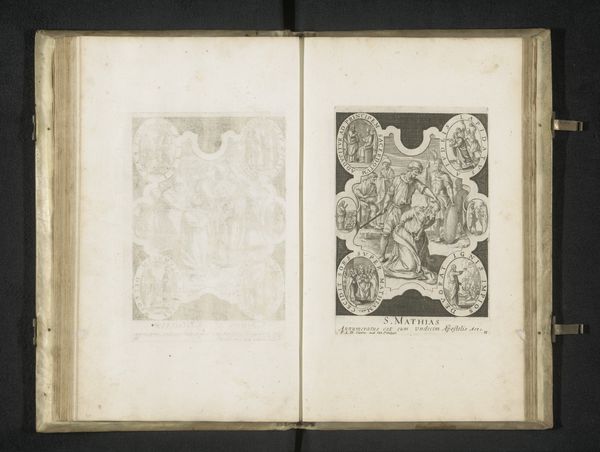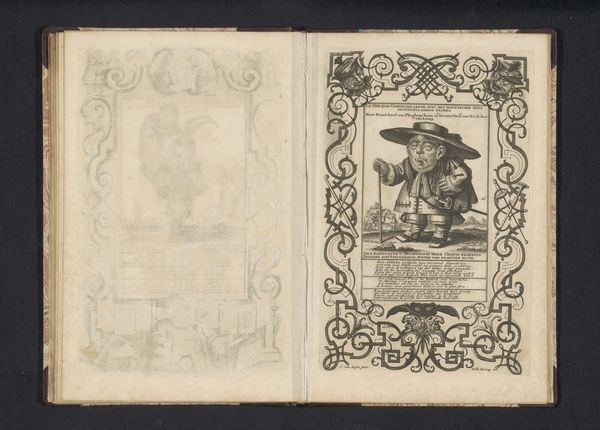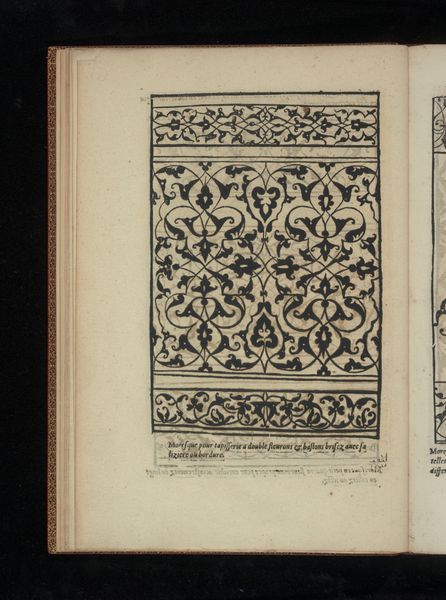
drawing, coloured-pencil, print, sculpture
#
drawing
#
coloured-pencil
#
water colours
# print
#
figuration
#
coloured pencil
#
sculpture
#
line
Dimensions: height 124 mm, width 176 mm
Copyright: Rijks Museum: Open Domain
Curator: Here we have "Zaal met sculpturen in het Musée du Luxembourg", a colored-pencil drawing created before 1894, attributed to Bonnamy. Editor: Immediately, I’m struck by the chromatic tension. The red and blue lines seem to vibrate on the page, giving the sculptures an almost ethereal presence. It is rather disconcerting. Curator: Yes, and I think understanding the Musée du Luxembourg’s context helps us appreciate that tension. In the late 19th century, it served as a museum for contemporary art. To display sculptures in this manner, especially rendering them in this fragmented color scheme, might represent an attempt to democratize and make sculpture accessible. Who did it make it accessible to, and why? Editor: Perhaps accessible through reproduction. It looks almost like an anaglyph, the old method for making things 3D, hinting at a desire to make the art present. The stark lines and blocks of color simplify the forms but simultaneously fracture the sculptural images into many component lines and blocks. Curator: Precisely! And we can consider the impact of such reproductions in an era defined by the rise of mass media. How did the dissemination of art imagery alter understandings of national identity and cultural values? Was this democratization genuinely inclusive? These sculptures—classical in form—primarily represented white European ideals, of course, reinforcing dominant cultural narratives of beauty and power. Editor: The formalism contributes to that impression of dominant order. The carefully structured space—the sharp receding lines—contains, almost imprisons, the artistic subjects. And even through its color, the image, being composed only of blue and red, has set limits. The red calls for our eye to recall the white marble. Curator: And perhaps to recall those debates about art education and accessibility for marginalized communities that still reverberate today. This artwork offers an unexpectedly complex window into art's role in constructing and perpetuating cultural norms. Editor: Agreed. Even from my formalist point of view, it provides such an engaging perspective on both the technology and artistry involved in reproduction, creating something visually stimulating despite the constraints of its palette and the inherent limitations of capturing three-dimensional objects on a two-dimensional plane.
Comments
No comments
Be the first to comment and join the conversation on the ultimate creative platform.




